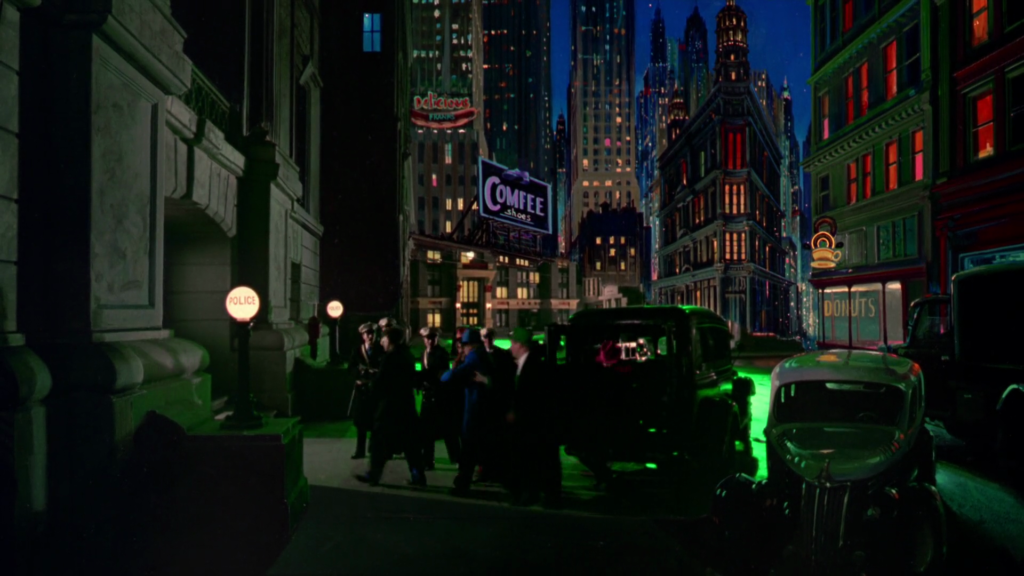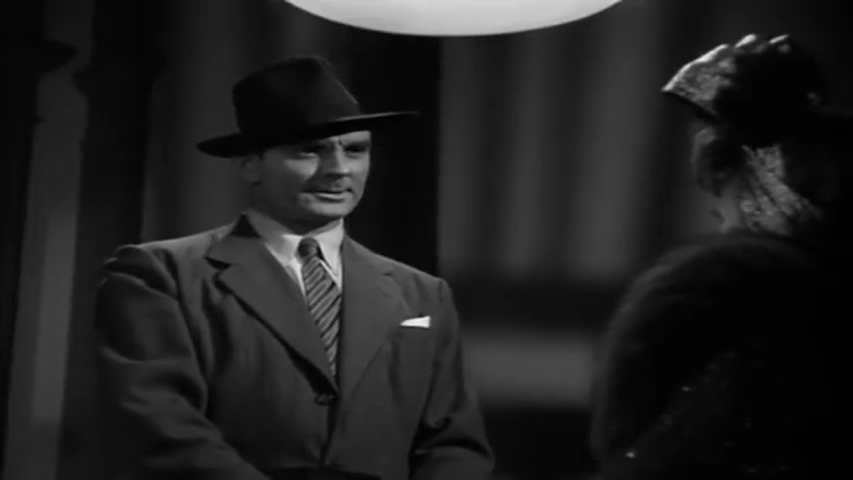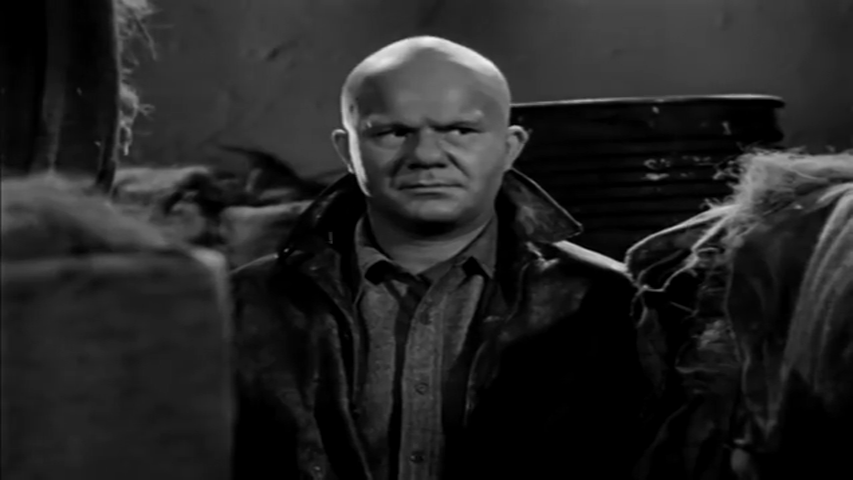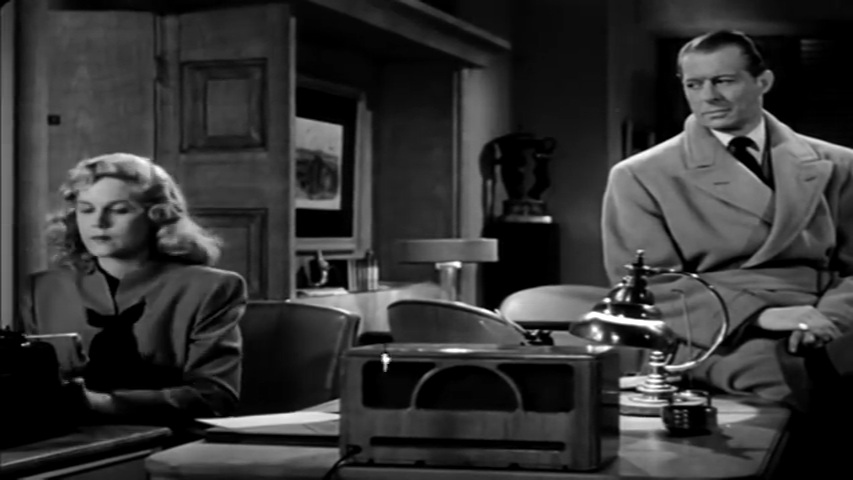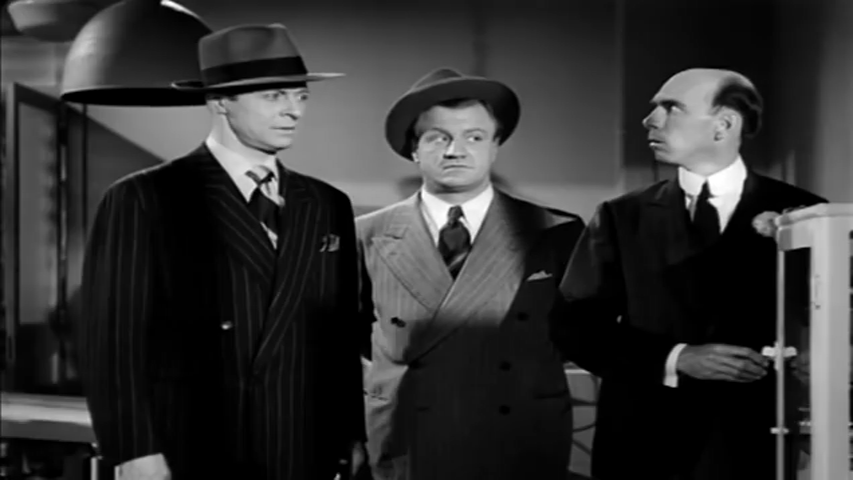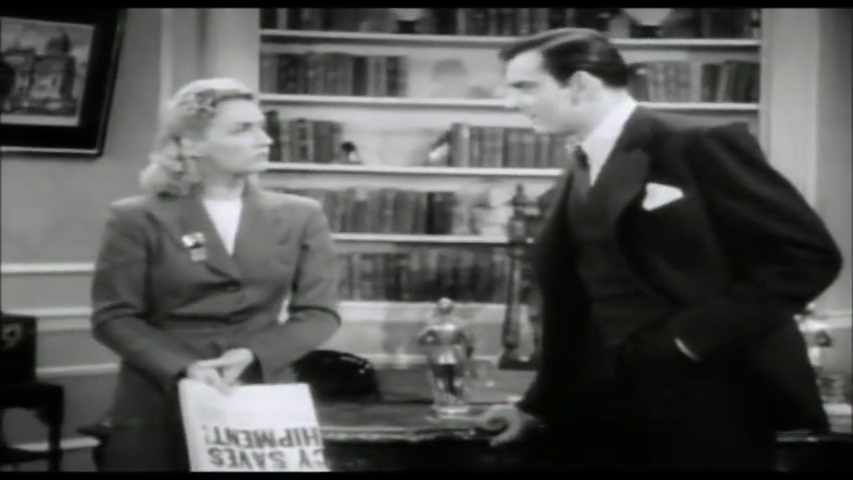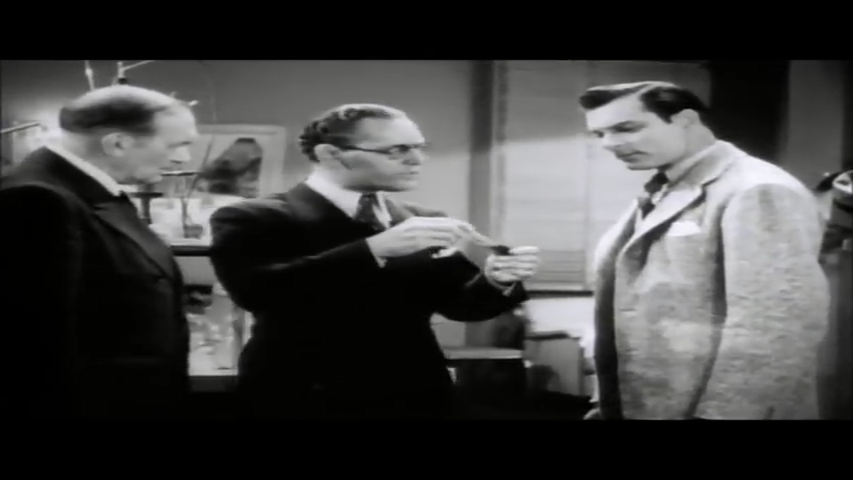-
#399 – Dick Tracy (1990)
Dick Tracy (1990)
Film review #399
Director: Warren Beatty
SYNOPSIS: Detective Dick Tracy is busy attempting to clean up the city of the criminals that are terrorising it. He rescues a homeless kid from a criminal, and ends up having to look after him along with his girlfriend Tess Trueheart. Meanwhile, Big Boy Caprice has united all of the city’s mobsters under his rule, and the only way Tracy can get him locked up is to convince Breathless Mahoney to testify against him, who seems to have her own agenda altogether…
THOUGHTS/ANALYSIS: Dick Tracy is a 1990 film based on the comic strips of the same name created by Chester Gould. The film starts out with Dick Tracy on the trail of criminal Lips, who turns up dead. Tracy suspects the work of Big Boy Caprice, but his evidence hinges on the testimony of Breathless Mahoney, who witnessed Lips being buried in cement (Tracy found one of her earrings at the scene of the crime). Tracy also manages to apprehend a nameless kid who is pick-pocketing and decides to have the kid stay with him. Meanwhile Big Boy Caprice has managed to unite all of the city’s criminals under his rule, and Tracy has to find a way to put a stop to them. The story is…well, there’s lots of it. On one hand, it adds in a lot of the characters and ideas from the comics, but on the other, it adds too many without exploring them in depth; it just throws the characters in with a bunch of others with no time to really develop them. The opening of the film basically throws the viewer into the deep end with Tracy trying to apprehend these criminals that he clearly has a history with, but we aren’t given much of an insight into it and why Tracy is so intent on pursuing these criminals at all costs. In one sense, in keeping with the comic strip origins, not everything needs to be explained, nor for a reader to read every single comic strip to understand what’s going on. In the case of a self-contained film, however, the motivations of the characters really need to be at least signposted through recaps, flashbacks or some other narrative device. The film is simple enough to follow, and doesn’t have too many interruptions to its flow, but there’s such an interesting setting and cast of characters that aren’t delved into that it is a little disappointing. At least the film sticks to the comic’s origins in the mobster-filled, crime-noir genre rather than going into the sci-fi stories involving aliens living on the Moon that the comic went into in the sixties. The only sci-fi element that shows up is the communicator watch that Tracy wears, and that doesn’t really stand out too much from the setting. A small problem I have with the ending is that Caprice ends up getting killed, which I think would have been better if instead he was arrested and sent to jail, as that’s what Tracy’s goal was throughout the whole film.
The film’s biggest strength is by far its cinematography and style. I don’t think there is anything else like it (especially at the time it was released). The backgrounds and cityscape shots are large scale matte paintings done in a traditional comic perspective that are brought to life with amazing detail and colour. The colour on the whole is incredibly striking, with high contrast props, sets and costumes making individual elements stand out in shots. For example, Tracy’s distinctive cream coloured hat and coat are saturated and give him a commanding presence in the dark shots of the city at night. Every character too wears a similar high saturated colour, making them recognisable and visually appealing. In doing so, the film overcomes the paradox of having a crime-noir in full colour by replicating the high contrast of ‘noir’ through highly saturated colour. Not only this, but it also manages to pay homage to the typically flat colours associated with comic strips. All of this is a remarkable achievement that also doesn’t feel very dated. The other striking element of the film’s style is it’s use of prostheses and make-up to give the villain’s comic book proportions. For example, Pruneface has these huge wrinkles covering his face that make him look like a prune, Flattop has a…flat top of his head. It’s cartoony, but they all still have a menacing aura about them thanks to the exceptional work of the prosthesis. If you’re going to remember this film for anything, then it is its style and vision which will stay with you.
The characters themselves definitely have plenty of personality, though as mentioned there could do with exploring in greater depth some of these interesting-looking people. Tracy, played by Warren Beatty, who also directed the film, feels like he’s channelling Harrison Ford (particularly Indiana Jones) in his performance. Sometimes he is straight-laced, sometimes he is quick-thinking and action-oriented. Al Pacino as Big Boy Caprice has a commanding presence and the prostheses that fills out his body compliments that nicely. Breathless Mahoney is played by Madonna, who turns in an alluring performance as well as performing some original cabaret songs that hit the mark. The mixture of drama and comedy again is executed well, with a good amount of visual gags that are easy to miss given Tracy’s often straight-faced response. His interactions with the character Mumbles (who mumbles everything he says) is in particular a chance for the film to strike a humourous note.
Overall, Dick Tracy offers a visual treat that manages to pull off the aesthetics of crime-noir and comic book drama with a striking use of colour and convincing make-up that situates every element of the film perfectly in the world it creates. The result is a memorable visual experience coupled with some dramatic and over-the-top performances. The story suffers from having too much going on and not enough depth to the most important elements, but on the whole it is still enjoyable enough to sit through.
-
#397 – Dick Tracy meets Gruesome (1947)
Dick Tracy Meets Gruesome (1947)
Film review #397
Director: John Rawlins
SYNOPSIS: A bank robbery that ends in a murder means that homicide detective Dick Tracy gets put on the case. The robbery, which involved using a special gas that froze everyone in place while the robbery was carried out. Meanwhile, the criminal known as Gruesome, who carried out the robbery, is still at large and continuing to carry out crimes…
THOUGHTS/ANALYSIS: Dick Tracy Meets Gruesome is a 1947 feature film, as well as the fourth and final film in the Dick Tracy film series. The film starts off with a criminal named Gruesome getting out of prison and going to see fellow criminal Melody about a job. He visits a scientist where he stumbles upon a gas that he inhales. As he tries to make it back to Melody at the bar, he falls unconscious at the door, where he is picked up by Pat Patton, detective and Dick Tracy’s partner. He is seemingly dead, but he wakes up in the morgue and knocks out Pat before he escapes. Gruesome gets a hold of the gas again and uses it to rob a bank by freezing everyone inside. Coincidentally, Dick Tracy’s girlfriend Tess is in the bank and witnesses the robbery, as she is in a phone booth and unaffected by the gas. When a guard is shot and killed by the robbers as they flee, Dick Tracy becomes involved in the case and attempts to track down the robbers before the press print the story and they flee town. The content is again very similar to the previous three films in the series, with a balance between investigation and action. This film seems to pack a lot more content into it though, and definitely moves around to focus on a lot more elements. As such I don’t think it flows quite as smoothly as the others, but it’s not too much of an issue. One other main difference is the more science-fiction element of the freezing gas, which is something which isn’t a part of the previous films. It does stand out from the noir-crime and somewhat down-to-earth style of the film, but then again it still follows its comic book roots with the dramatic angles and silly naming of characters, so it’s hardly a world-breaking element.
The villain this time is Gruesome, a man who has recently come out of prison (whether he has been released or escaped is left ambiguous) and immediately gets back into a life of crime. Gruesome is portrayed by Boris Karloff, the famous horror movie actor best known for his role in 1931′s Frankenstein as the Monster. He obviously knows how to play a good villain; with his cold, threatening stare that speaks more than any words that he could say. Pat Patton even exclaims that Gruesome looks like Boris Karloff, which is a bit of an odd fourth-wall-breaking moment. However because of his recognisable appearance, Gruesome is probably the most memorable of the Dick Tracy villains. In terms of the other characters, Ralph Byrd returns as Dick Tracy, along with familiar characters Pat Patton and Tess Trueheart. The minor characters, in keeping with the style of these films, all have names relating to their profession, such as the scientist Dr. A Tomic. It’s a bit silly, but as mentioned it is in keeping with the original comic strip, and finely balances the gritty crime-noir with a mixture of slapstick comedy and comic-esque camera angles.
Overall, Dick Tracy meets Gruesome continues the work that the previous films did, without much else to say. The addition of a more science-fiction focus changes things up a little, although it does feel a little out of place compared to the rest of the series. Boris Karloff provides a menacing villain that is memorable and interesting to follow, and while the series’ trademark of mixing action, investigation, noir and comedy elements probably veers more towards a light-hearted approach than its predecessors, it still keeps close to the successful formula it has hit on of blending these elements of different genres into a short but entertaining watch.
-
#395 – Dick Tracy’s Dilemma (1947)
Dick Tracy’s Dilemma (1947)
Film review #395
Director: John Rawlins
SYNOPSIS: A robbery at a vault full of furs also leaves one person dead and a suspicious insurance claim. Homicide detective Dick Tracy and his partner Pat Patton are put on the case where they investigate the involvement of a man known only as “the Claw”…
THOUGHTS/ANALYSIS: Dick Tracy’s Dilemma is a 1947 film and the third Dick Tracy feature film. The film opens up with a robbery being committed on a safe at a storage facility. The watchman attempts to intervene, but later when it is found that he is missing, homicide detective Dick Tracy and his partner Pat Patton are put on the case and find the safe, which was supposed to be full of imported furs, empty. Tracy investigates the involvement of the vault’s insurance company, as well as the involvement of a man known only as “The Claw”. The story is very similar to the other two films of the series, with a murder investigation being the primary thread running through the film, with lots of little investigations and twists tying into it. The runtime of sixty minutes is again similar to its predecessors, which keeps everything streamlined and without unnecessary filler. It is well paced with a variety of locations and colourful characters to keep things interesting.
The most notable element of this film compared to the others is the return of Ralph Byrd to the role of Dick Tracy in place of Morgan Conway from the first two. Byrd starred as Tracy in the four movie serials released between 1941 and 1947, and his return is very much welcome. While Conway probably looked more like the Dick Tracy from the comics, Byrd has a much more likeable charm and personality, and just seems to fit in better with the other cast members. The rest of the cast also has plenty of personality, and embody the type of comic book characters of the original format, with the ridiculously cartoony names and all. Tess Trueheart as Tracy’s girlfriend returns, and is a better fit with Byrd’s Tracy, as she always looked far too young to be Conway Tracy’s girlfriend. The English theatre actor Vitamin (see what I mean about cartoony names?) as some comic relief and eccentricity, along with the accident prone Pat Patton. The Claw himself is also fairly menacing, but is very similar to the other villains in the earlier films. The film balances the gritty crime-noir aesthetics with high contrast lighting and dramatic angles with these comic-esque characters that would appeal to a younger audience. Again, the film balances these two genres very well without undermining one another.
There is not much else to say about this film that I didn’t mention in my reviews of the earlier ones. Dick Tracy’s Dilemma, following its predecessors, has hit a sweet spot balancing crime-noir with a comic book style that can appeal to a wide range of viewers (which is what you want in a feature film). It doesn’t change much from the previous films, and sticks very much to the sixty minute runtime, but again it doesn’t need to really innovate if it already has a successful formula. The return of Ralph Byrd to the role of Dick Tracy is certainly the only tweak the formula needed to make. Another solid entry in the series, even if it lacks anything innovative.
-
#391 – Dick Tracy vs. Cueball (1946)
Dick Tracy vs. Cueball (1946)
Film review #391
Director: Gordon M. Douglas
SYNOPSIS: Police detective Dick Tracy is called to a murder scene on board a ship where a jeweller has been strangled and a valuable set of diamonds has been stolen. As he continues to investigate, he uncovers a conspiracy involving multiple people to sell the diamonds, and must apprehend the man known as Cueball, who is killing off the people involved…
THOUGHTS/ANALYSIS: Dick Tracy vs. Cueball is a 1946 crime-noir film and the second Dick Tracy feature film. As the film opens, we see a boat docking into port when a thief breaks into a jeweller’s cabin, killing him and stealing the diamonds. Dick Tracy is called out to investigate the murder, and suspects a much larger conspiracy to re-cut and sell the diamonds. The story follows the investigation through all its twists and turns, and it is a story that is easy enough to follow while having enough interesting developments to keep one’s interest. At just over sixty minutes, it is not a long film, but it still feels full of content along with offering a complete experience. There’s not too much else to say different than what I wrote for the review for the previous film: its’s more of the same, mixing comic book characters with the crime-noir setting resulting in an easy to follow story, but an entertaining one at the least. Unlike its predecessor though, this one feels a little more down to earth, without the odd mystical elements that didn’t quite belong or go anywhere.
The protagonists from the first film all return, and as there, each of them feel a little like the comic book characters they are based on. The various suspects too have their own particular appearances and personalities, and it’s fun watching them all interact with each other. Everybody has something going on or a role to play, and no one feels wasted. The main antagonist, Cueball, definitely feels very menacing, and a genuine threat throughout, made even more menacing by the use of lighting throughout in typical crime-noir fashion. Tracy’s assistant Pat Patton provides a bit of comic relief, along with the young Junior, and Tracy’s girlfriend Tess Trueheart also gets a role to play in the investigation. Overall, Dick Tracy vs. Cueball is very similar to its predecessor released in the previous year, but also manages to make some improvements by tightening the story, making it flow better, and making the villains more menacing. It’s not an exemplary example of the crime-noir genre, but it’s a good combination of it with the comic strip characters and personalities that gives it a bit of a unique flair. If you enjoyed the first one, you will certainly enjoy this one too.
-
#387 – Dick Tracy (1945)
Dick Tracy (1945)
Film review #387
Director: William A. Berke
SYNOPSIS: Police detective Dick Tracy is investigating a series of murders carried out by a man calling himself “Splitface”. With plenty of suspects around, Tracy has his hands full trying to apprehend the killer, protect the mayor, and keep his girlfriend Tess happy…
THOUGHTS/ANALYSIS: Dick Tracy is a 1945 film and the first feature film in the Dick Tracy franchise, after the four serials made between 1937 and 1941. The film starts out with a murder of a teacher, which Tracy learns has been carried out by a man calling himself ‘Splitface,’ thanks to a note left by the killer demanding a ransom payment. As the film progresses, a number of suspects emerge, and Tracy must use all of his detective skills to work out who the murderer is. The film fits very much in the crime-noir genre, with the high contrast lighting and dark plot. It also evokes the original comic book style with its dramatic perspectives. The story is certainly more of a faithful adaptation of the comic book than the serials with Tracy being a police detective rather than a G-man as he was in the serials. More of the characters from the comic also make an appearance, which will probably be welcome to readers of the comic (I assume a fair amount of people would have heard of the comics back when the film was released). With each new suspect that emerges, there’s a new element to the plot to be explored, and the pacing is quite consistent with allowing these plot points to keep things from becoming stale or dull. There are some unresolved elements that don’t really go anywhere though, such as Judith Owens being reluctant to discuss where her Father is. With a runtime of just over sixty minutes, the film is quite short, but I think it accomplishes what it wants to do.
As mentioned, a number of characters from the original comic make an appearance, creating a varied and interesting cast. A lot of them also have exuberant appearances or names (Deathridge for the undertaker, for example), which emphasises the comic style. despite the gritty film-noir story, there’s some light-hearted comedy moments which seem more comic-esque, and it feels like the film is trying to pull off both at once, with mixed results. One thing I think the serials did better is the use of science-fiction elements which added something unique, and I think was more in-line with the comics. This film has much more realism, but not so much that it is able to stand out in the film-noir genre. One bizarre scene involves a scientist gleaming into a crystal ball and seemingly hypnotising Tess, but that seems completely out of place, and it was never explored if he really did have the power to hypnotise someone.
This film marks the first time that Dick Tracy is not played by Ralph Byrd, instead by Morgan Conway. The tow look and act very differently, and if you’ve seen the serial you might not like the change. Whereas Byrd’s performance was widely praised as a smooth, charming, action man, Conway is clearly older and lacks that charm, instead seeming a bit goofy at times (although Conway probably looks closer to the character as depicted in the comics). This seems to be a largely held consensus, and led to Byrd reprising the role of Tracy for the third and fourth feature films, as well as the television show. Overall, Dick Tracy is a decent enough crime film, with a mix of action, mystery and some comedy, with a film-noir feel that makes things a little more dramatic, alongside incorporating some more elements of the comics. There’s a clash in tone between a gritty murder drama and the more silly comical aspects, and some plot points which aren’t fully resolved, but it’s an easy and quick watch that holds most of its elements together well.
-
#386 – Dick Tracy vs. Crime, inc.
Dick Tracy vs. Crime, Inc. (1941)
Film review #386
Directors: William Witney, John English
SYNOPSIS: Dick Tracy is assigned to deal with a criminal known only as “The Ghost”, who is able to turn himself invisible thanks to a special invention. The Ghost is after the members of a city crime council, who helped convict his brother Rackets Regan and sentenced him to death. It is a race against time for Tracy to stop The Ghost before he succeeds in killing all the remaining members of the council…
THOUGHTS/ANALYSIS: Dick Tracy vs. Crime, Inc. is a 1941 movie serial and the fourth Dick Tracy serial to be released in as many years. This time, Dick Tracy is on the trail of a master criminal who calls himself “The Ghost,” who also has the power to turn himself invisible thanks to a special machine. The Ghost is seeking to take revenge on the city crime council, who helped convict his brother Rackets Regan to death, and in the opening chapter, we see him take out one of the council members, and his daughter June Chandler, teams up with Tracy in order to stop The Ghost. The story combines two typical tropes of the movie serial format: one, an invisibility device which many serials have done, and two, the identity of the main villain is hidden behind a mask until they are exposed in the final chapter. As always, there’s nothing too unique about the way the serial uses these plot points, but again this Dick Tracy serial manages to use them better than its contemporaries, and create a well balanced serial with plenty of action and intrigue. The added sci-fi element makes it feel a little different from the previous Tracy serials too, which is what is needed in this fourth instalment. There is a fair amount of re-using stock footage from the previous serials for the cliffhangers at the end of each chapter, but honestly it doesn’t feel like that much of a problem, as you know they will always end up with Dick Tracy escaping just in time.
As the serial progresses, there is a range of villainous schemes that Tracy and his friends have to foil, as well as the mystery of The Ghost’s identity with adds an element of mystery to everything. There’s always plenty going on, and the dialogue never gets too dragged down in exposition. For this serial, Dick Tracy is the only returning character, although Billy Carr and June Chandler play the roles of Steve Lockwood, a fellow agent, and Gwen Andrews, Tracy’s secretary in an almost identical capacity. Ralph Byrd as Dick Tracy has always been the star of the serials, and as long as he returns, the rest of the cast are pretty inconsequential. The identity of The Ghost is kept secret throughout the serial, with suspicion falling upon various members of the council at different points, then shifted away as they are killed. Everything is tightly-knit together, and even though it does cut down the cast and re-use some footage, I think it may be the best serial out of them all: it perfects what it is trying to do, and even though it uses plot devices that have been seen in the serial format before, it does them a lot better. If you were going to only see one Dick Tracy serial, I would probably say to choose this one, as it exemplifies not only the best of Dick Tracy, but some of the best examples of the serial format.
-
#384 – Dick Tracy’s G-Men (1939)
Dick Tracy’s G-Men (1939)
Film review #384
Directors: William Witney, John English
SYNOPSIS: F.B.I. agent Dick Tracy has successfully captured the international spy Zarnoff, who has been sentenced to death. However, he manages to escape, and picks up where he left off attempting to steal or sabotage military equipment to sell to the ‘three powers’, as Dick Tracy once again tries to stop him.
THOUGHTS/ANALYSIS: Dick Tracy’s G-Men is a 1939 film serial and the third Dick Tracy serial. In the opening, we see a film showing how F.B.I. agent Dick Tracy successfully captured foreign spy Zarnoff, who has now been sentenced to death by gas chamber. While in jail awaiting his sentence however, Zarnoff is sent a newspaper which is laced with a substance which when ingested, causes him to appear dead and stop breathing before he is taken to the gas chamber. While his body is being transferred, members of Zarnoff’s gang hijack the ambulance and steal his body, subsequently reviving him since the substance caused him to stop breathing before he went into the gas chamber, therefore did not breathe in any of the lethal gas (yes, it sounds a bit farfetched). When Dick Tracy learns of Zarnoff’s escape, he again attempts to catch up with him, as Zarnoff has sworn revenge against Tracy. The story, split into fifteen chapters, revolves around (as you would expect) Tracy attempting to foil the numerous schemes of Zarnoff, which, as is a staple of the Dick Tracy serials, outperforms others in the genre by having plenty of variety and imagination, splitting the time between investigation and action scenes. It still sticks rigidly to the serial format, and is essentially more of the same, but its predecessors were popular, so there isn’t really much need to drastically change them. The story around the spy Zarnoff attempting to sell American secrets to the “three powers” would have been more relevant to the time it was released, as World War II had essentially begun, so the theme of spies and espionage would have been particularly poignant, with the “three powers” clearly being a reference to the axis powers.
One more significant change in Dick Tracy’s G-Men was the thinning out of the cast. A number of the characters do not return, including Mike McGurk and Junior, who mostly provided the comic relief, and so the film does feel a bit more serious, again with the back drop of a world war looming. In fact, Ralph Byrd, who plays Dick Tracy, is the only returning actor. Even though the characters Steve Lockwood, a fellow F.B.I. agent, and Gwen Andrews, Tracy’s assistant still show up, they are played by different actors. The character Zarnoff is of particular interest, as he looks like a cross between Stalin and some east-Asian influences, which makes sense given the time of release, and America’s animosity to that area of the world (there were many serials produced around the second World war that utilised a villain that was made to look Chinese or east-Asian).
The pacing of the film is fairly standard, with a new scheme showing up every two or three chapters to keep things interesting, and the standard cliffhanger at the end of each chapter to entice viewers to return to the theatre next week to the next chapter. The ending sees Zarnoff and Tracy crash a plane in the desert, with the two handcuffed together, they are desperate to find water when eventually finding some, Zarnoff knocks Tracy out and uncuffs itself. When Lockwood shows up and finds Tracy, they see that the water contains Arsenic, and shortly find Zarnoff’s body (offscreen) as he has died from ingesting the water. Not exactly a thrilling conclusion, but they never are after investing so much time into these serials they never end on much of a high note. Nevertheless, Dick Tracy’s G-Men is more of the same, but it still maintains a position well above most of the format in terms of action, pacing and characters.
-
#384 – Dick Tracy Returns (1938)
Dick Tracy Returns (1938)
Film review #384
Directors: William Witney, John English
SYNOPSIS: F.B.I. G-man Dick Tracy is on the trail of the Stark family: A criminal gang consisting of “Pa Stark” and his five sons. When new G-man recruit Ron Merton is murdered by the Starks when they hijack a convoy, Tracy swears revenge and attempts to track them down while thwarting their many villainous schemes.
THOUGHTS/ANALYSIS: Dick Tracy Returns is a 1938 film serial and the sequel to the Dick Tracy serial released a year earlier. The story this time revolves around Dick Tracy trying to thwart the criminal enterprises of the Stark family criminal gang, led by Papa Stark and his five sons Champ, Trigger, Dude, Kid and Slasher (great names). The Starks have a range of schemes and crimes they try to carry out, and this gives the serial enough variety to see it through, as Tracy and his team have to stop them across land, sea and air, resulting in an array of chases, as well as some good old-fashioned detective work. The original Dick Tracy serial was a strong mix of serial elements that kept its momentum across its fifteen chapters. Dick Tracy Returns emulates that success and continues it. There’s not much new here, but since the original was a success, there isn’t any need to fix what is not broken. And of course, in an era without repeats on television or home media, it was easier to repeat things on screen as the only way to watch these serials was to go to the theatre every week for the next instalment.
Most of the protagonists from the first serial return with the same actors, which provides a good sense of continuity. The only real change is that a different actor plays Junior, but that’s not much of a distraction. There’s not much character development, but every character has a role to play, from the heroic Dick Tracy and Steve Lockwood, the humour from Mike McGurk, and Tracy’s assistant Gwen, there’s a decent amount of variety in the characters. The villains are also fairly interesting, and showing Tracy stop the individual sons of papa Stark makes the story flow a little easier. Like the first serial, Dick Tracy Returns is a good example of the movie serial format, and has plenty of action, distinguishable characters and thrilling cliffhangers to keep viewers coming back. It’s mostly par for the course for the serial format, but a good example of it.
-
#381 – Dick Tracy (1937)
Dick Tracy (1937)
Film review #381
Directors: Alan James, Ray Taylor
SYNOPSIS: F.B.I. G-man Dick Tracy is on the trail of the criminal gang known as the Spider Ring. They have invented a flying fortress called The Wing and it is Tracy’s job to find a way to stop it and the gang’s evil schemes. Alongside this, he is also trying to find his brother Gordon, who has gone missing, and unbeknown to Dick, has been brainwashed by the Spider Ring to do their bidding…
THOUGHTS/ANALYSIS: Dick Tracy is a 1937 movie serial based on the comic book character of the same name. The serial stars, unsurprisingly, Dick Tracy, who is a “G-man” working for the F.B.I. investigating crimes, specifically trying to bring down the criminal gang known as the Spider Ring, who leave the mark of a spider on their victims before they kill them. Dick also has to find out what has happened to his brother, who has gone missing, and unbeknown to him has been captured by the Spider Ring and been brainwashed into becoming their servant. The serial’s story unfolds across a lengthy fifteen chapters, with the usual serial shenanigans taking place. Despite the length, the serial does a good job of keeping things interesting, and has a number of mini-arcs in the story to keep things varied. Dick Tracy’s character as a criminal investigator plays a strong role in the story, as he is actually investigating the crimes and following the evidence, rather than just showing up and getting into a fistfight like a lot of these serials.
The action scenes are also well varied, with their being chases across land, sea and air. The aerial scenes are probably the most interesting, as they are fast-paced and have plenty of stunts. The real sci-fi element of the serial comes in the form of The Wing: a large plane that resembles a flying fortress crossed with a stealth plane. It is the sort of thing that would not have been seen before when it was released, so it certainly gives the serial some originality. While The Wing plays a large role in the earlier chapters, it appears less frequently in the later ones, which is a shame since it probably had some more potential, but there’s plenty of other things going on so it doesn’t feel like the serial runs out of steam.
As mentioned, Dick Tracy’s role as a criminal investigator gives him plenty to do, and separates him from the similar white-male leads of these type of serials by giving him a unique character trait. The cast of supporting characters is quite large, but they all serve a purpose and you can tell them apart. The comedic relief in the form of the young Junior and his guardian McGurk aren’t overplayed, and provide just enough of a contribution to the story without being distracting. The villains, including the leader of the Spider Ring known as “The Lame One” are also well varied, including the rogue doctor Moloch who performs the operation to brainwash Gordon Tracy (who also has his face changed, which is rather pointless as none of the heroes see his face that would recognise him). The Lame One’s identity is kept a mystery until the end, but if you follow the serial closely, you can probably tell who it is, and it doesn’t act as too much of a revelation. Nevertheless, an overall interesting cast that are recognisable and add different dynamics to the serial.
The special effects of the film are pretty good for the time, and while a lot of the plane stunts are done with models, they are still convincing. A lot of the aerial stunts are pretty implausible and flying the face of physics, but given that cinema goers in 1937 would probably have not been in a plane (or maybe even seen one), it’s not going to break the immersion. Overall, Dick Tracy manages to take the typical aspects of the serial format and excel with them: the action is varied, the story is full of drama and suspense, the characters are well-defined, and there’s plenty of content to keep viewers coming back to the theatre every week.






